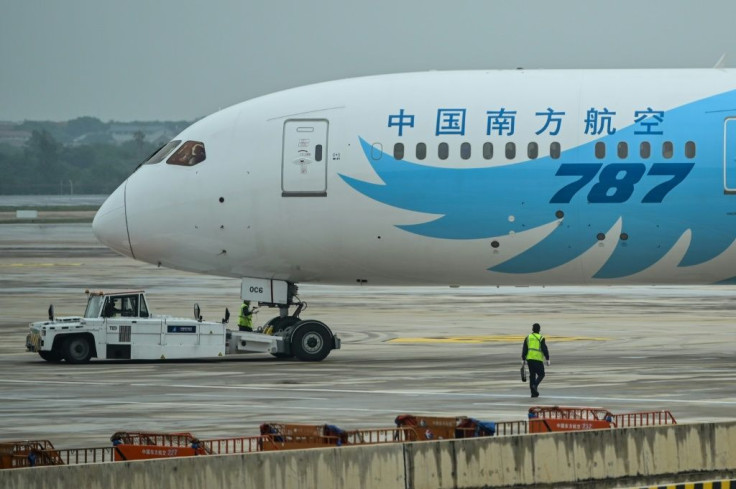Ready To Fly In A Boeing Max? House Says These Five Problems Caused Lethal Crashes
KEY POINTS
- The House Transportation and Infrastructure Committee has released its final report on the Boeing 737 Max, finding widespread mishandling of production in both the FAA and Boeing
- The Max was responsible for two deadly crashes that killed 346 people after the planes went into automated nosedives
- The FFA maintains that the planes were "compliant" with regulation during development, and they may return to service this winter.
The House Transportation and Infrastructure Committee released the results of an investigation into the Boeing 737 Max on Wednesday, finding that government oversight failed and corporate interests prioritized profits over safety.
Boeing 737 Max planes crashed twice before being grounded, killing 346 passengers after going into nosedives. Reports say Boeing is going to put the planes back into service this winter, despite the problems uncovered by the House investigation, including:
1. Government oversight bodies delegating regulation to the corporations they are supposed to oversee instead of performing their responsibilities themselves
2. Boeing systematically prioritizing profits and fast rollouts over safety measures
3. Critical control systems relying on only a single external sensor, sending the planes into nosedives when it malfunctioned
4. Boeing obfuscating or withholding information from regulators
5. Regulators ignoring their own experts to side with corporations
The combination of these factors resulted in the rollout of a plane that had seen little safety review and had vulnerabilities in a key automated safety system, MCAS. MCAS is designed to automatically right the planes if the nose begins to unintentionally climb, a possibility due to the Max’s layout.
The original plans for the plane had two sensor systems for the failsafe to minimize the possibility of failure. The second system was removed late in the design process without notifying regulators, and the system was made more aggressive to work at low speeds.
The New York Times reported that descriptions of the system were removed from pilot manuals and that the Federal Aviation Administration declined to review any of these changes. Boeing presented the system as merely adjusted from its original form, and unlikely to activate in the first place.

Boeing also applied pressure internally to rush the plane out the door, hanging “countdown clocks” in its conference rooms. Designers were not informed of changes made by other teams. This compartmentalized approach resulted in MCAS changes being implemented without knowledge of critical elements of the system.
Committee chairman Rep. Peter Defazio, D-Ore., said that the crashes “could have been prevented, and we’re going to take steps in our legislation to see that it never happens again.”
The highest-ranking Republican on the committee, Rep. Sam Graves, R-Mo., said that the findings of the committee were skewed, calling them “a partisan investigative report.”
Michael Stumo, the father to one of the crash victims, noted in a statement to the Times that victims’ families are still denied access to information about the safety changes made to the Max.
“The FAA and Boeing hid information before and are doing it again,” he said.
Perhaps most damning, the FAA maintains that the planes were “compliant” with federal safety and oversight guidelines despite the fatal crashes.
The Times reported that the Max could return to service with revamped safety systems as early as this winter. Despite the bad publicity, there is still demand for the plane, driven by enhanced efficiencies that would save airlines millions.
© Copyright IBTimes 2024. All rights reserved.





















